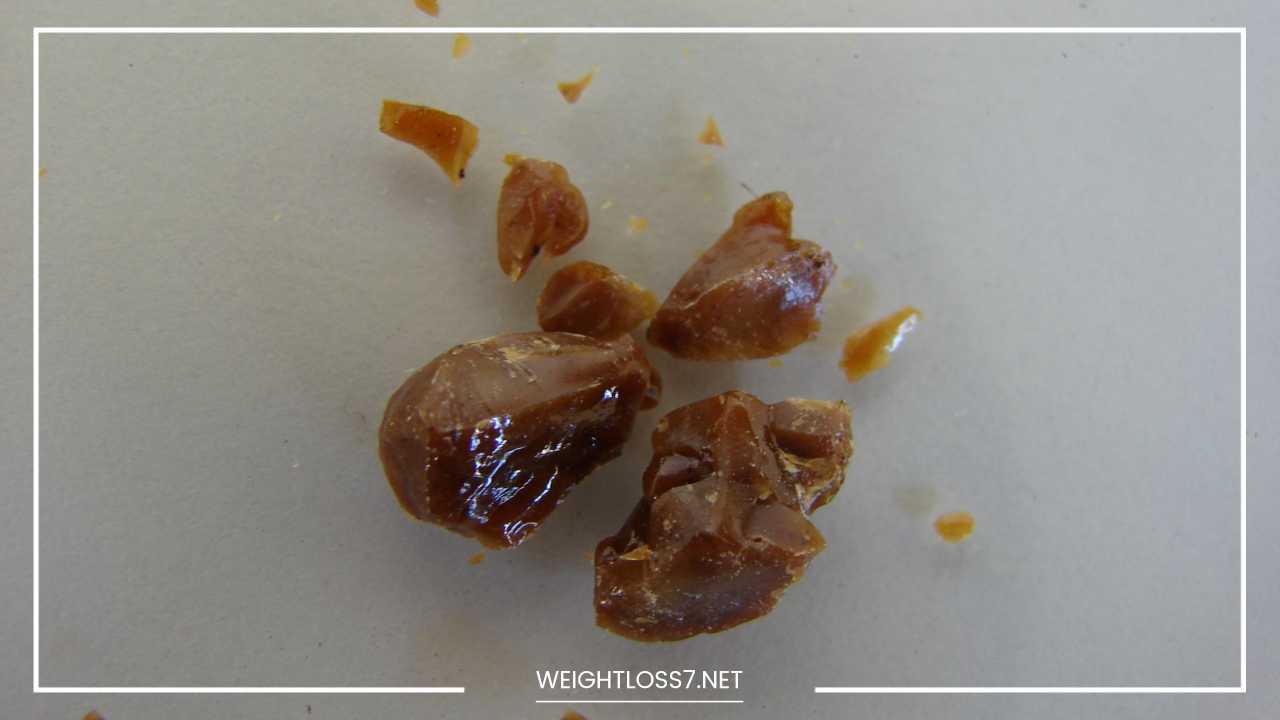Balsam of Tolu Uses and Benefits

Balsam of Tolu
Balsam of Tolu: Unveiling the Fragrant Resin’s Rich History, Uses, and Considerations
Balsam of tolu, a resin boasting a warm, vanilla-like aroma, has captivated humankind for centuries. This sap-like substance, extracted from the Myroxylon balsamum tree native to South America, transcends cultures, finding its place in traditional medicine, modern applications, and even the world of fragrance.
Today, we embark on a journey to unveil the multifaceted nature of balsam of tolu, exploring its historical significance, potential benefits, and crucial considerations for safe use.
A Journey Through Time: The Historical Significance of Balsam of Tolu
The story of balsam of tolu stretches back centuries, weaving itself into the rich tapestry of traditional medicine practiced by indigenous communities in South America. Here, we delve into some of the fascinating historical uses of this fragrant resin:
-
Solace for Respiratory Ailments: For generations, indigenous cultures relied on balsam of tolu to alleviate respiratory issues like coughs, bronchitis, and congestion. Its expectorant properties were believed to loosen phlegm and ease breathing, offering relief from discomforting respiratory symptoms. Early explorers documented these traditional practices, and balsam of tolu found its way into European and North American pharmacopoeias by the 18th century.
-
A Balm for the Skin: Beyond its respiratory benefits, balsam of tolu’s potential antiseptic and skin protectant qualities made it a valuable topical remedy. Minor cuts, scrapes, bedsores, and even cracked nipples found solace in the resin’s soothing embrace. Historical accounts suggest that topical application of balsam of tolu was a common practice for wound care and skin protection.
-
Aromatic Allure: The captivating fragrance of balsam of tolu did not go unnoticed. It found its way into the world of perfumes, incenses, and other aromatic applications. Its warm, balsamic notes added depth and complexity to fragrant concoctions, used for both personal adornment and ceremonial purposes. Balsam of tolu’s unique scent played a role in shaping the history of perfumery.
Unveiling the Science: Potential Benefits of Balsam of Tolu
While traditional uses of balsam of tolu hold historical significance, modern science is shedding light on its potential benefits. Here, we explore some promising areas of research:
-
Respiratory Support – A Deeper Look: The resin contains compounds like benzoic acid and cinnamic acid, which exhibit potential mucolytic (mucus-loosening) properties. These compounds may help loosen phlegm and ease coughs. Studies suggest that inhaling steam infused with balsam of tolu or using a chest rub containing it might offer some relief for respiratory issues. However, more rigorous clinical trials are needed to definitively establish its efficacy.
-
Skin Health – Beyond Tradition: Balsam of tolu’s potential antiseptic and skin protectant properties continue to be investigated. Early research suggests that the resin may possess some antimicrobial activity against certain bacteria and fungi. Additionally, its potential to form a protective barrier on the skin might be beneficial for minor wounds and irritations. However, further research is needed to confirm its effectiveness for specific skin conditions and to establish safe and effective dosages.
-
Antimicrobial Activity – A Promising Frontier: Preliminary studies suggest that balsam of tolu may possess some antimicrobial activity against a range of microorganisms, including bacteria and fungi. This opens doors for potential applications in wound healing and the fight against microbial infections. However, more research is required to understand the specific mechanisms of action and the effectiveness of balsam of tolu against different pathogens.
It’s important to remember that scientific research on balsam of tolu is ongoing. While these potential benefits show promise, more rigorous studies are needed to fully understand its efficacy and safety for various uses.
Beyond Tradition: Modern Applications of Balsam of Tolu
The story of balsam of tolu extends beyond its historical and potential medicinal uses. The resin finds its way into various aspects of our modern world:
-
Food and Beverage Flavoring: The warm, vanilla-like flavor of balsam of tolu adds a unique and delightful touch to various food and beverage products. Chewing gum, candies, and even certain beverages benefit from the subtle sweetness and depth of flavor that balsam of tolu imparts.
-
The Art of Fragrance: Balsam of tolu continues to play a role in the fragrance industry. It acts as a fixative in perfumes and cosmetics, helping the fragrance last longer and adding depth and complexity to the overall scent profile. Perfumers leverage the unique balsamic notes of balsam of tolu to create captivating and long-lasting fragrances.
-
Pharmaceutical Applications: The resin’s expectorant properties have led to its use as an ingredient in some cough syrups and other cough remedies. However, it’s important to note that the use of balsam of tolu in modern pharmaceuticals is not as widespread as it once was. Other, more rigorously studied expectorants have taken center stage in modern cough medications. Nevertheless, balsam of tolu remains an intriguing ingredient with potential applications in cough relief formulations, particularly for those seeking natural remedies.
Important Considerations with Balsam of Tolu: Balancing Tradition with Safety
While balsam of tolu offers a range of potential benefits, it’s crucial to approach its use with caution and consider some important factors:
-
Limited Scientific Evidence: A significant portion of our knowledge about balsam of tolu stems from traditional practices. While these practices hold historical value, more high-quality scientific studies are needed to fully understand the effectiveness and safety of balsam of tolu for various uses. Rigorous clinical trials are essential to establish clear evidence for its efficacy in treating specific conditions.
-
Potential Side Effects: Balsam of tolu may cause allergic reactions in some individuals. It’s vital to conduct a patch test on a small area of skin before applying it topically. This helps identify any potential sensitivities and avoid allergic reactions. When inhaled, balsam of tolu might irritate the respiratory tract, especially in individuals with pre-existing respiratory conditions. It’s important to exercise caution and consult a healthcare professional before using balsam of tolu for inhalation purposes.
-
Safety During Pregnancy and Breastfeeding: There is limited information on the safety of balsam of tolu during pregnancy and breastfeeding. Due to this lack of data, it’s best to err on the side of caution and avoid using balsam of tolu during these times. Consulting a healthcare professional before using any herbal remedy during pregnancy or breastfeeding is crucial to ensure the safety of both mother and baby.
-
Dosage and Interactions: There is no established recommended dosage for balsam of tolu. Due to the limited scientific evidence and potential side effects, consulting a healthcare professional is essential before using balsam of tolu. They can provide guidance on safe and appropriate use, especially if you have any underlying health conditions or are taking medications. Balsam of tolu may interact with certain medications. A healthcare professional can help assess potential interactions and ensure safe use.
Exploring Safe Use: How to Use Balsam of Tolu
Balsam of tolu can be used in various ways, but it’s important to exercise caution and prioritize safety:
-
Topical Application: For topical use, balsam of tolu should always be diluted with a carrier oil like jojoba oil or coconut oil before applying it to the skin. This helps to minimize the risk of irritation. Never apply undiluted balsam of tolu directly to the skin.
-
Inhalation: If considering inhalation, add a few drops of diluted balsam of tolu to a diffuser or steamer. Inhaling the vapor can potentially offer some respiratory relief. However, be cautious and discontinue use if you experience any irritation. Individuals with pre-existing respiratory conditions should consult a healthcare professional before inhaling balsam of tolu.
-
Ingestion: Balsam of tolu is not recommended for internal consumption without the guidance of a qualified healthcare professional. Due to the lack of established safe dosages and potential side effects, it’s crucial to avoid ingesting balsam of tolu unless specifically advised by a healthcare professional.
Beyond the Blog: Exploring Balsam of Tolu Further
While this blog post has explored the fascinating world of balsam of tolu, there are additional avenues to consider if you’re interested in learning more:
-
Scientific Literature: For a deeper dive into the scientific research on balsam of tolu, consider searching reputable medical databases like PubMed or ScienceDirect. These resources allow you to explore published studies on the resin’s potential benefits and limitations. Remember, critical evaluation of research is crucial. Look for studies with strong methodologies and large sample sizes.
-
Herbal Reference Books: Reputable herbal reference books can provide detailed information on the traditional uses, potential benefits, and safety considerations of balsam of tolu. Look for books published by trusted institutions or authors with expertise in herbal medicine. These resources can offer a broader perspective on the historical context and cultural significance of balsam of tolu.
-
Organizations Focused on Natural Health: Organizations dedicated to natural health and herbal remedies may have information on balsam of tolu. These resources can provide insights into traditional uses and potential benefits, but it’s important to critically evaluate the information and prioritize evidence-based approaches.
-
Consulting a Naturopathic Doctor or Herbalist: For personalized guidance on using balsam of tolu, consider consulting a qualified naturopathic doctor or herbalist. These practitioners have expertise in natural remedies and can help you determine if balsam of tolu is appropriate for your individual needs. However, it’s important to remember that naturopathic medicine and herbalism are not replacements for conventional medical care.
Safety First: A Final Word of Caution
While exploring natural remedies can be interesting, prioritizing safety is paramount. Here’s a final reminder:
-
Always Consult a Healthcare Professional: Before using balsam of tolu, consult a qualified healthcare professional, especially if you have any underlying health conditions, are pregnant, breastfeeding, or taking medications. They can assess your individual situation and advise on safe and appropriate use.
-
Beware of Misinformation: The internet is a vast resource, but it can also be a breeding ground for misinformation. Be wary of websites or claims that promote balsam of tolu as a cure-all. Rely on reputable sources and prioritize evidence-based information.
-
Start Low and Go Slow: If a healthcare professional advises using balsam of tolu, start with a low dose and monitor your body’s response. Gradually increase the dose as needed and tolerated.
By approaching balsam of tolu with a healthy dose of curiosity, critical thinking, and a focus on safety, you can embark on a journey of informed exploration.
Remember, this fragrant resin’s story is still being written, and scientific research holds the key to unlocking its full potential.
Final Word: Unveiling the Potential of Balsam of Tolu
Balsam of tolu’s rich history, intriguing fragrance, and potential benefits make it a captivating subject. While scientific research is ongoing to fully understand its effectiveness, the resin holds promise for various applications.
However, it’s important to remember that scientific evidence is still developing. Consulting a healthcare professional before using balsam of tolu is essential to ensure safe and appropriate use.
By combining traditional knowledge with modern scientific exploration, we can continue to unveil the potential of balsam of tolu.
Whether it’s finding new applications in the world of fragrance, exploring its role in respiratory support, or delving deeper into its potential skin health benefits, the story of balsam of tolu is far from over.
As research progresses, this fragrant resin may continue to surprise us with its versatility and potential contributions to health and well-being.
Disclaimer: This blog post is for informational purposes only and should not be construed as medical advice. Please consult with a qualified healthcare professional before using balsam of tolu or any other herbal remedy.

















